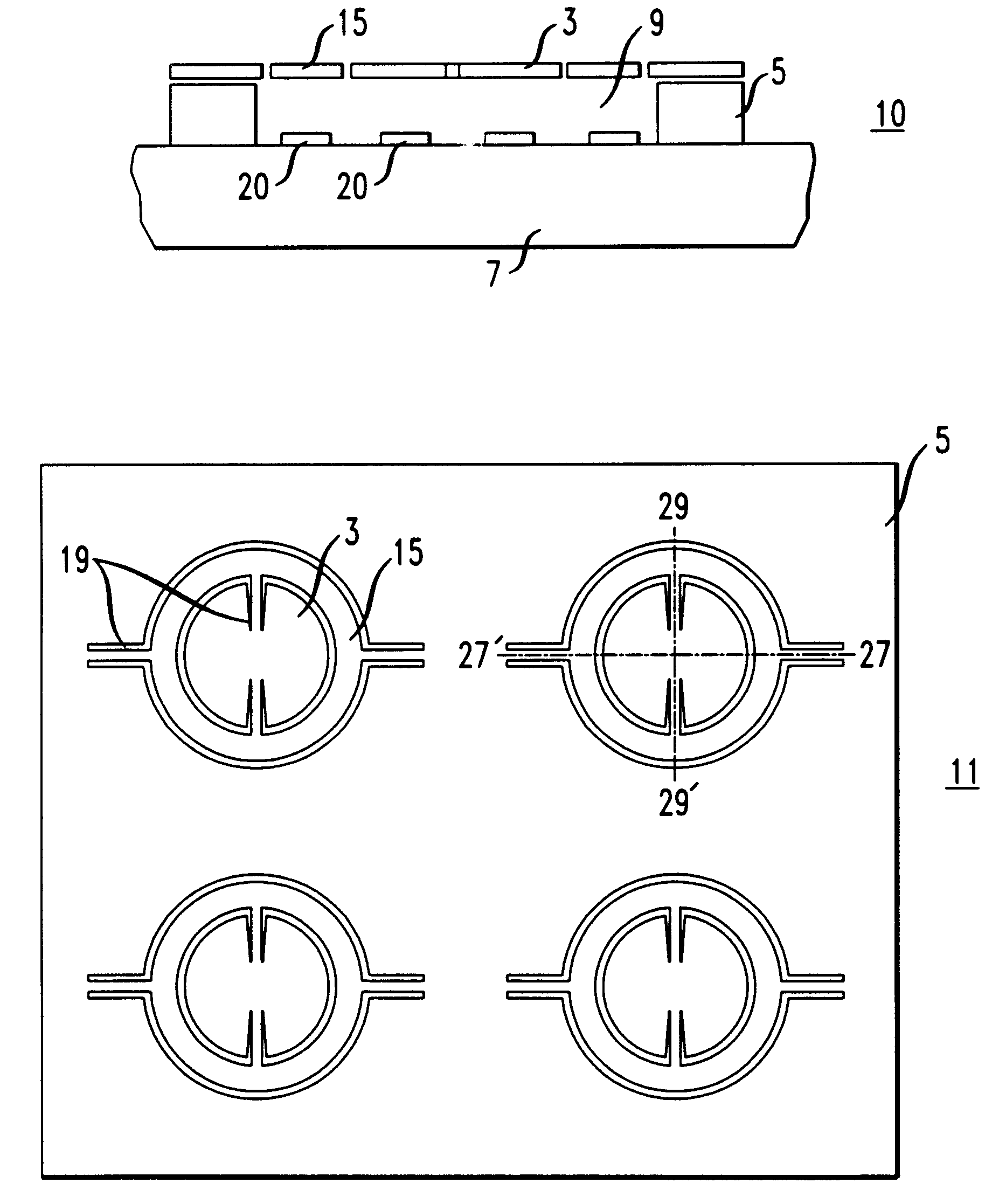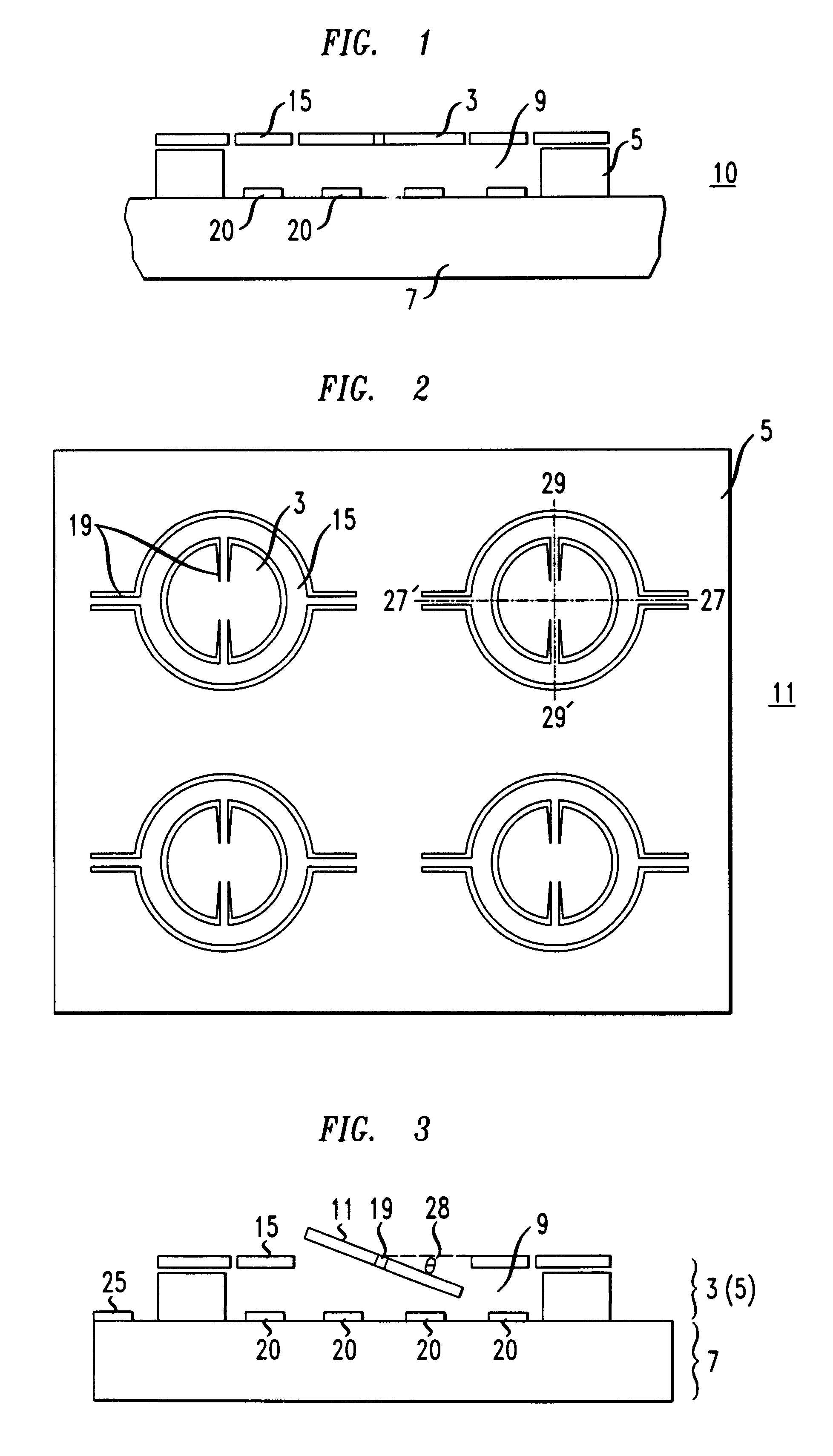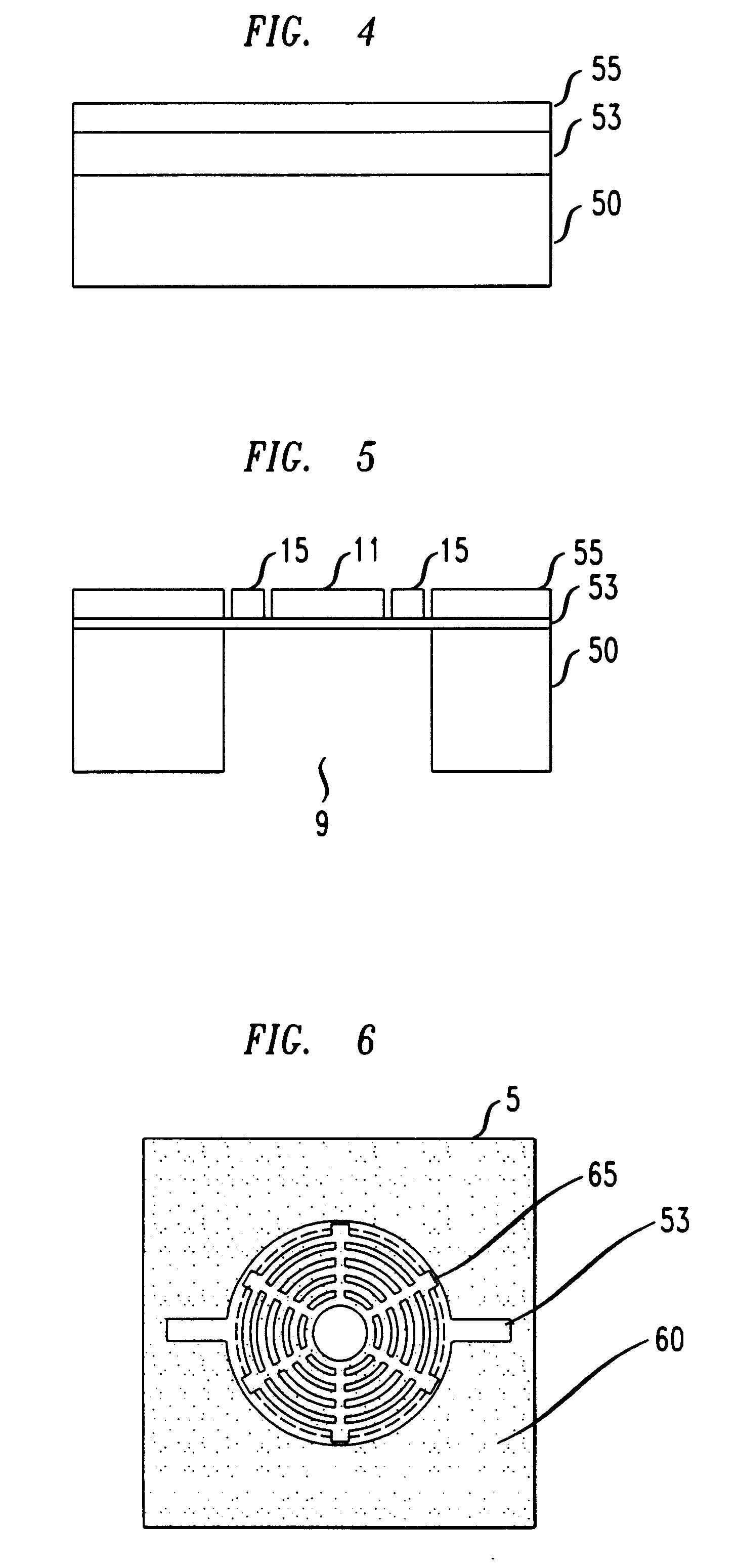Process for fabricating an optical mirror array
a mirror array and optical technology, applied in the field of optical mirror array fabrication, can solve the problems of affecting the optical mirror array,
- Summary
- Abstract
- Description
- Claims
- Application Information
AI Technical Summary
Problems solved by technology
Method used
Image
Examples
Embodiment Construction
An electro-optic device having the structure depicted in FIG. 2 was modeled. The array of cavities were assumed to be circular, with center-to-center spacings of about 1.0 mm. Based on the center-to center cavity spacings of about 1.0 mm, each mirror of the array had a diameter of about 650 .mu.m. The outer diameter of the support structure (gimbal) was about 815 .mu.m.
Assuming that each mirror had a thickness of about 2 .mu.m, the torsional members coupling the mirror to the supporting structure had lengths of about 175 .mu.m, and the torsional members coupling the supporting structure to the substrate had lengths of about 295 .mu.m. Based on the dimensions of the mirrors and supporting structure the gap spacing between the mirror and the bottom of the cavity was assumed to be about 165 .mu.m.
Semicircular electrodes each having a radius of about 175 .mu.m were positioned in the cavities below the mirror.
Calculations determined that a potential of about 200 volts applied between one...
PUM
 Login to View More
Login to View More Abstract
Description
Claims
Application Information
 Login to View More
Login to View More - R&D
- Intellectual Property
- Life Sciences
- Materials
- Tech Scout
- Unparalleled Data Quality
- Higher Quality Content
- 60% Fewer Hallucinations
Browse by: Latest US Patents, China's latest patents, Technical Efficacy Thesaurus, Application Domain, Technology Topic, Popular Technical Reports.
© 2025 PatSnap. All rights reserved.Legal|Privacy policy|Modern Slavery Act Transparency Statement|Sitemap|About US| Contact US: help@patsnap.com



